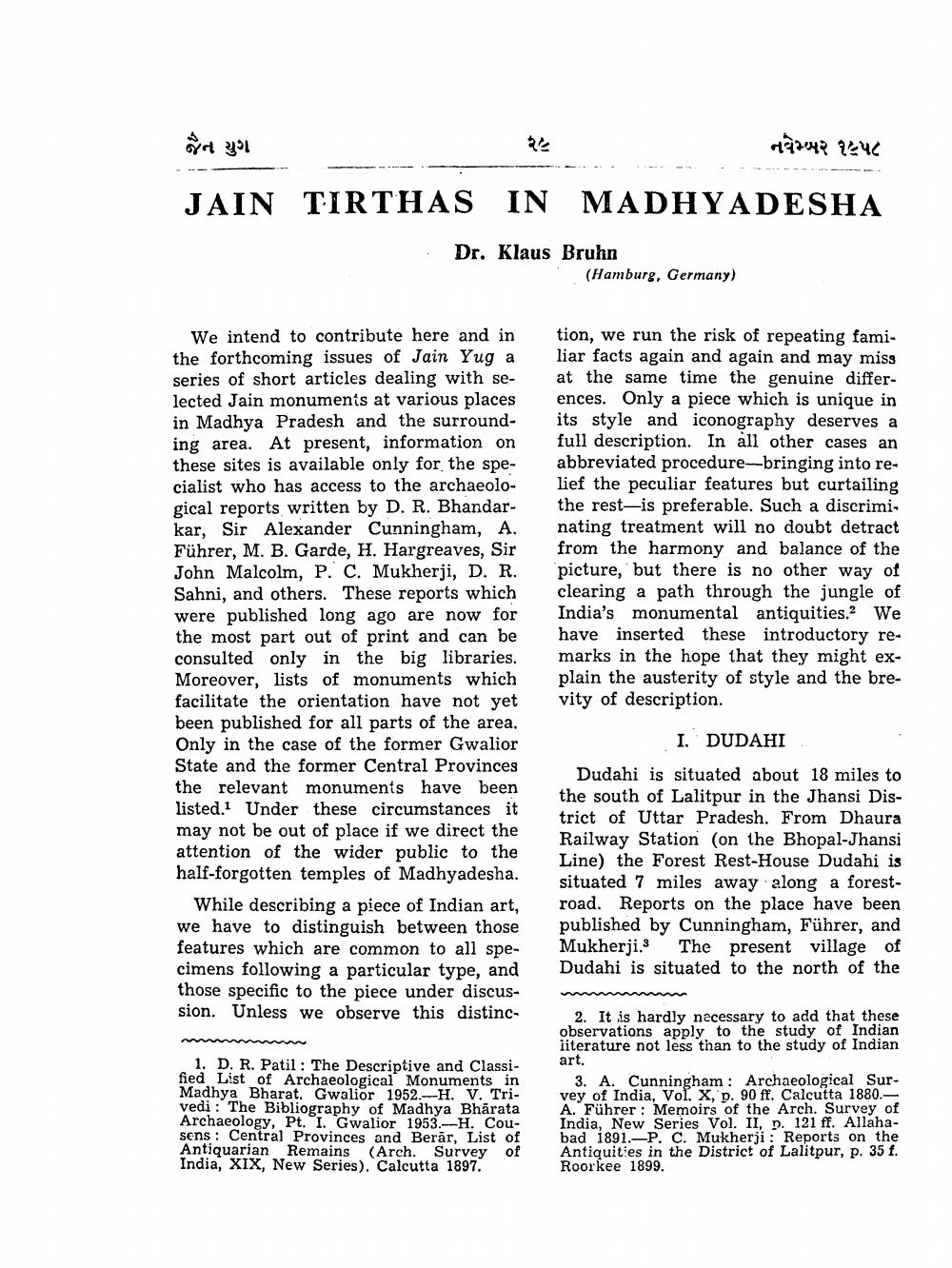________________
જૈન યુગ
JAIN TIRTHAS
We intend to contribute here and in the forthcoming issues of Jain Yug a series of short articles dealing with selected Jain monuments at various places in Madhya Pradesh and the surrounding area. At present, information on these sites is available only for the specialist who has access to the archaeological reports written by D. R. Bhandarkar, Sir Alexander Cunningham, A. Führer, M. B. Garde, H. Hargreaves, Sir John Malcolm, P. C. Mukherji, D. R. Sahni, and others. These reports which were published long ago are now for the most part out of print and can be consulted only in the big libraries. Moreover, lists of monuments which facilitate the orientation have not yet been published for all parts of the area. Only in the case of the former Gwalior State and the former Central Provinces the relevant monuments have been listed. Under these circumstances it may not be out of place if we direct the attention of the wider public to the half-forgotten temples of Madhyadesha.
IN
Dr. Klaus Bruhn
While describing a piece of Indian art, we have to distinguish between those features which are common to all specimens following a particular type, and those specific to the piece under discussion. Unless we observe this distinc
2
1. D. R. Patil: The Descriptive and Classified List of Archaeological Monuments in Madhya Bharat. Gwalior 1952.-H. V. Trivedi: The Bibliography of Madhya Bharata Archaeology, Pt. I. Gwalior 1953.-H. Cousens: Central Provinces and Berar, List of Antiquarian Remains (Arch. Survey of India, XIX, New Series). Calcutta 1897.
MADHYADESHA
નવેમ્બર ૧૯૫૮
(Hamburg, Germany)
tion, we run the risk of repeating familiar facts again and again and may miss at the same time the genuine differences. Only a piece which is unique in its style and iconography deserves a full description. In all other cases an abbreviated procedure-bringing into relief the peculiar features but curtailing the rest is preferable. Such a discrimi nating treatment will no doubt detract from the harmony and balance of the picture, but there is no other way of clearing a path through the jungle of India's monumental antiquities.2 We have inserted these introductory remarks in the hope that they might explain the austerity of style and the bre vity of description.
I. DUDAHI
Dudahi is situated about 18 miles to the south of Lalitpur in the Jhansi District of Uttar Pradesh. From Dhaura Railway Station (on the Bhopal-Jhansi Line) the Forest Rest-House Dudahi is situated 7 miles away along a forestroad. Reports on the place have been published by Cunningham, Führer, and Mukherji, The present village of Dudahi is situated to the north of the
2. It is hardly necessary to add that these observations apply to the study of Indian literature not less than to the study of Indian art.
3. A. Cunningham: Archaeological Survey of India, Vol. X, p. 90 ff. Calcutta 1880.A. Führer: Memoirs of the Arch. Survey of India, New Series Vol. II, p. 121 ff. Allahabad 1891.-P. C. Mukherji: Reports on the Antiquities in the District of Lalitpur, p. 35 f. Roorkee 1899.




